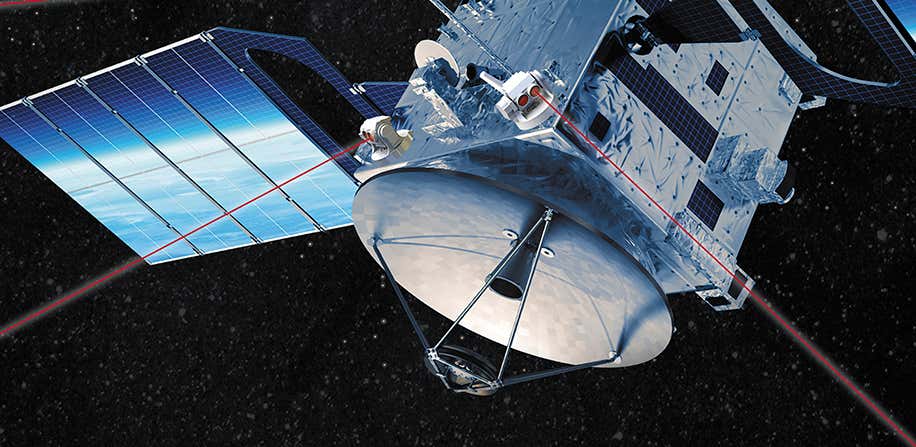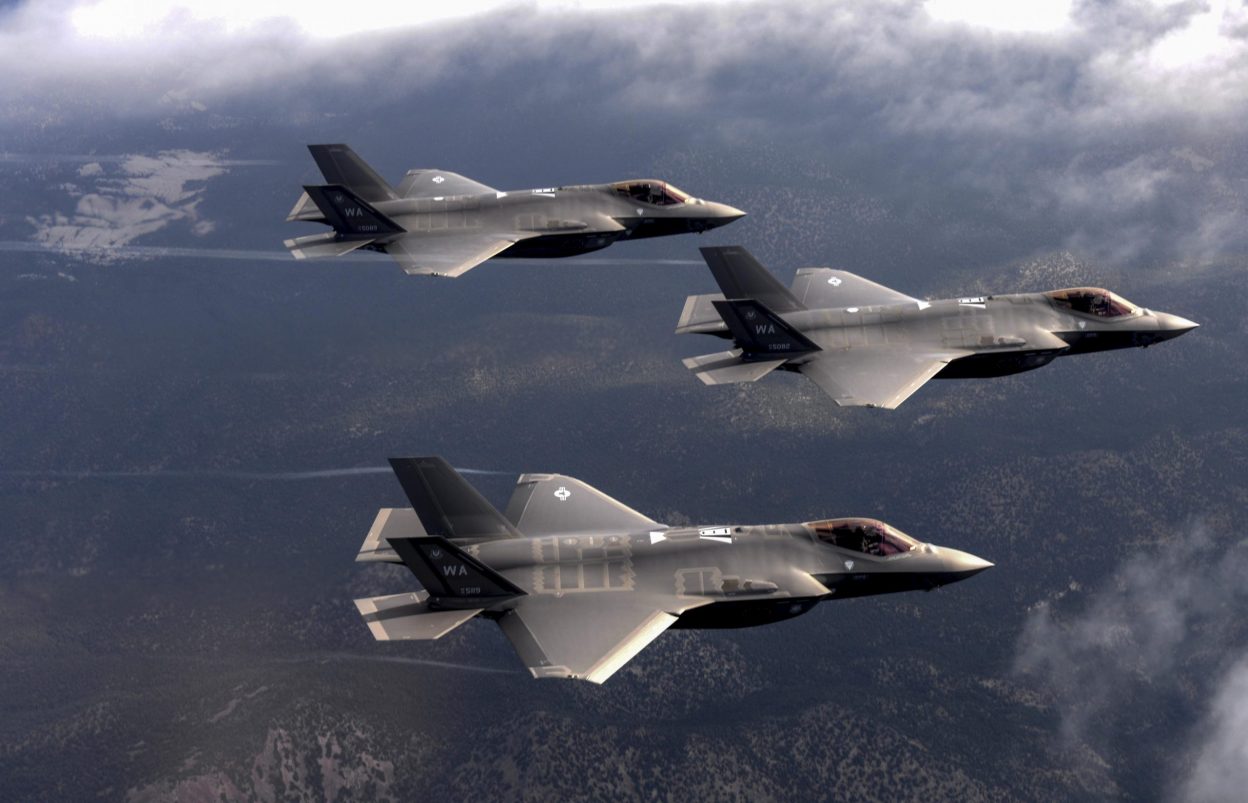Line-of-sight laser communication systems, which are capable of transferring huge amounts of data in less time, are said to be immune to jamming or interception.
AFWERX, a US Air Force program, is going to fund the development of a pod that can enable ‘beyond-line-of-sight’ laser communications between stealth aircraft such as F-35 and the satellites in orbit.
While this concept is not entirely new, considering the latest developments in the field of optical technologies, it makes sense to deploy such systems across a large force.
In a future conflict scenario involving electronic warfare, traditional radio frequency-based networks could be susceptible to being compromised. In such a situation, more resilient and ‘hardened’ communication systems such as laser links will prove to be highly valuable for the military.

Defense and space company Space Micro was awarded the Phase 1 Small Business Technology Transfer contract earlier this week. The San Diego-based company that designs electro-optical sensors, software subsystems, and communication technologies for satellites, was acquired by Voyager Space recently,
How Will It Work
Under this contract, the company will be working on the project ‘DEFORMO’, aimed at developing an “Air-to-Space Laser Communications Pod that could be deployed on a variety of USAF aircraft”, as stated by the firm.
David Strobel, CEO of Space Micro, said on January 25 that the company is going to figure out a way of providing an “optical communication chain between airborne assets and geostationary communications satellites”.
“This is a tough technical challenge. Optical communications between air and space require some of the hardest pointing and navigating that you could possibly do, especially if we’re told that they need to maintain this uplink while they’re maneuvering”, Strobel added.
The laser terminal for this project is going to transmit data at a speed of 10 gigabits per second. This terminal is going to be based on an existing design of Space Micro but will be upgraded with adaptive optics technology developed by Johns Hopkins University for NASA, Strobel further explained.
Space Micro also collaborated with Rhea Space Activity, a startup that is in the process of developing deep-space autonomous navigation and attitude-control system for military spacecraft.

The team is planning to design a pod that can sit under the wing of a fighter jet, such as the F-35, and is able to communicate with the spacecraft, according to Beau Rideout, an aerospace engineer at Rhea Space Activity. “The idea is to use satellite-based communications to provide high-speed bandwidth so aircraft can receive and send data to other military users around the world”, he said.
He added that the main challenge is “correcting the turbulence in the atmosphere that interferes with lasers and having a powerful enough laser to get out of the atmosphere”. Strobel said that the laser pod will be designed in a way that they “give our stealth aircraft the ability to securely communicate during sensitive operations without giving away their positions”, Space News reported.
The DEFORMO system being developed by Space Micro for the US Air Force also includes a patented “dual-adaptive mirror technology” which was developed by Johns Hopkins University for NASA.

A number of studies on the use of adaptive optics in airborne laser communications have been published by researchers who have been affiliated with the university. “This technology effectively cancels out the uncertainties of the physics of Earth’s atmosphere when it comes to transmitting high-speed optical communications”, Space Micro said.
Opportunity For US Air Force
If the AFWERX contract becomes successful, it would provide the USAF with an opportunity to try integrating a similar system into its manned and unmanned aircraft as well as other platforms which can function as sensor relays, according to The War Zone.
This concept can also be coupled with high altitude platforms for providing resilient beyond-line-of-sight communication relay capabilities for various aircraft which operate within the line of sight.
As already noted, contrary to traditional radio frequency (RF) communication, an optical data link such as this one is almost impossible to jam or intercept unless an enemy asset physically comes in between the pod and the satellite.
Apart from this, laser links are resistant to electromagnetic interference or pulses, further proving their resilience in comparison to the RF communication systems. Owing to these reasons, Space Micro claims that a pod of this kind can “give our stealth aircraft the ability to securely communicate during sensitive operations without giving away their positions”.
Even though laser links are more resistant to jamming than traditional RF communications, they do have their own share of challenges. Firstly, every air-to-space optical communications pod will have to carry a laser that is powerful enough in order to reach the satellites in orbit. This requirement created a major obstacle in the past in terms of size, power, and weight (SWAP).
However, modern laser technologies have been miniaturized to an extent that these factors are nowhere near as limiting as they had been earlier. Furthermore, the higher the altitude at which the platform is flying, the lesser the atmospheric disruption it faces.
- Written by Kashish Tandon/EurAsian Times Desk
- Contact the author at: kashishtandon21@gmail.com
- Follow EurAsian Times on Google News




